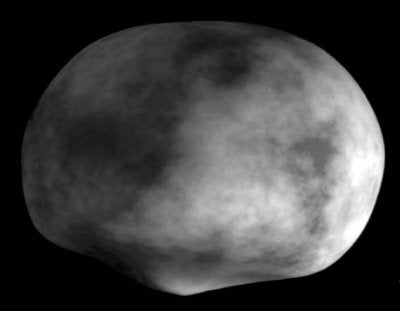Just as afternoons on sunny days are hotter than mornings, the afternoon side of an asteroid has a warmer surface than the morning side because sunlight has been falling on it longer.
Since hot surfaces radiate more than cool ones, the warm afternoon side radiates more than the cool morning side. This imbalance acts like a very weak rocket engine.
The effect of this tiny thrust on the object’s orbit depends on how it spins. If the spin goes one way, Yarkovsky thrust adds to the orbital speed and the asteroid moves outward, away from the sun. If the asteroid rotates the other way, Yarkovsky thrust slows the asteroid’s orbital velocity, and it draws closer to the sun.
Real asteroids can have spin axes oriented in any direction relative to their orbits, so the Yarkovsky effect in each case depends on the actual circumstances.
This activity demonstrates the Yarkovsky effect for asteroids rotating one way and then the other. Click on the link below to launch the animation.










